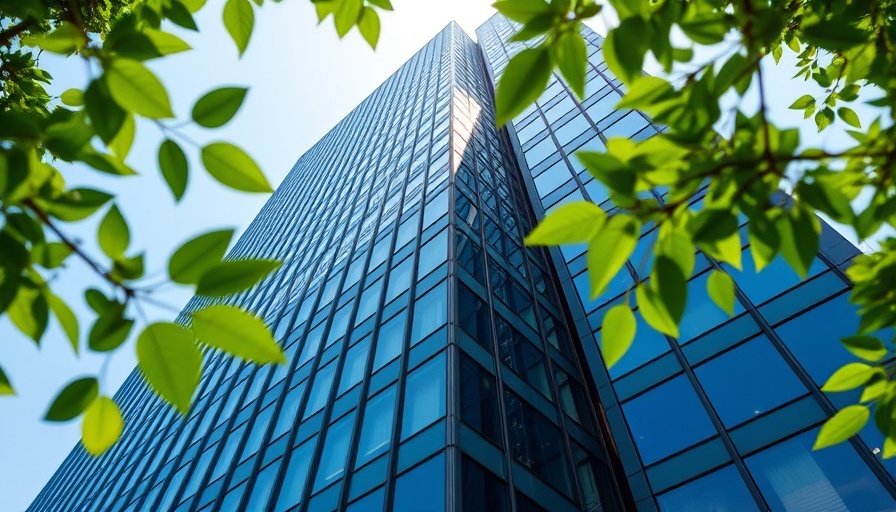
Reimagining San Francisco's Skyline: The Case for New Development
San Francisco stands at a crossroads, facing significant office space vacancies while contemplating a dramatic redevelopment proposal. At the core of this debate is Hines’ ambitious plan to build a 76-story tower at the former PG&E headquarters on Beale Street, a project that would add 1.65 million square feet of new office space in a market with a current vacancy rate exceeding one-third. While skeptics argue that this move is symptomatic of a misguided approach to urban planning, others suggest that history offers a different narrative: cities evolve, and new developments often catalyze revitalization and attract tenants seeking modern amenities.
Why This Proposal Might Work
The criticism against the project stems from apparent contradictions in a marketplace already saturated with vacant spaces. 'Do we really need more office buildings?' some voices echo through social media, capturing a prevalent concern among residents. However, multiple real estate experts argue that history has shown a pattern where new buildings attract businesses and individuals who prefer the cutting-edge environment that a new development brings. While existing spaces languish, newer structures might invigorate the urban landscape, offering more than just square footage but a fresh start to businesses and communities alike.
A Historic Investment with Future Implications
Acquired for $800 million in 2021, the site represents one of the highest price points paid per square foot for San Francisco real estate. This investment by Hines and the Korea National Pension Service signals a significant belief in the long-term potential of San Francisco. As these stakeholders prepare to demolish the old PG&E headquarters while renovating historic structures nearby, the project promises to incorporate a mix of residential units, public spaces, and commercial outlets, fueling urban life.
Aligning With Modern Needs: Live, Work, Play
San Francisco's transformation from a tech hub to a multifaceted lifestyle destination is underway. Plans to convert the longstanding office buildings into 120 residential units, alongside shops and eateries, reflect a broader trend toward mixed-use developments that cater to the modern tenant's desire for a blended lifestyle. Hines’ project aligns with city efforts to create vibrant neighborhoods where living spaces seamlessly connect with work opportunities and leisure. As articulated by city officials, such designs are crucial for fostering community engagement.
The Community Perspective: Fears and Hopes
While the redevelopment pitch is ambitious, it is met with mixed reactions from a community wary of further disruptions. Residents show concern over potential gentrification effects and whether new developments will benefit the existing community or simply cater to incoming businesses. Balancing these community sentiments while assembling a project that addresses modern urban life remains a challenge that city planners and developers must tackle proactively.
Comparing Local Trends: A Widespread Phenomenon
This phenomenon of building vast office spaces despite vacancy rates isn’t unique to San Francisco. Cities around the globe have faced similar dilemmas. For instance, in New York, significant projects have reshaped neighborhoods, bringing a mix of commercial real estate and residential opportunities. Just like in San Francisco, these developments seek to draw a new wave of residents and businesses alike, despite critiques regarding timing and location.
Future Predictions: What Lies Ahead?
What does this mean for the future of San Francisco? If this redevelopment proceeds, we could see a surge in urban vitality, drawing not only business tenants back but also encouraging younger demographics who desire a vibrant city life that blends work with play. Still, the success of this project depends on community involvement and transparency. Ensuring that existing residents feel included in this transformation will be key to making this vision a reality.
The Bottom Line: Is It Time for Change?
As the proposal to build the tallest office building in San Francisco evolves, the discussion surrounding its viability serves as a microcosm for broader urban development debates. It raises critical questions about our need for new spaces, the importance of aligning with current trends, and how development can be used as a tool for revitalization rather than simply existing as an architectural footprint. The decision to move forward with such an ambitious plan may seem daunting, but it also embodies the hope for a reinvigorated urban landscape.
 Add Row
Add Row  Add
Add 




 Add Row
Add Row  Add
Add 

Write A Comment